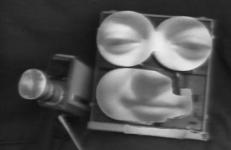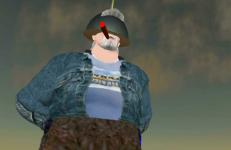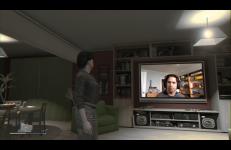Our Non-Understanding of Everything is a series of 16 videos that explore how the structures of architecture, semiconductors, and circuits become forms of expression reflecting hierarchies, cognitive processes, and relationships to the natural environment.
Technology
Our Non-Understanding of Everything is a series of 16 videos that explore how the structures of architecture, semiconductors, and circuits become forms of expression reflecting hierarchies, cognitive processes, and relationships to the natural environment.
Our Non-Understanding of Everything is a series of 16 videos that explore how the structures of architecture, semiconductors, and circuits become forms of expression reflecting hierarchies, cognitive processes, and relationships to the natural environment.
Our Non-Understanding of Everything is a series of 16 videos that explore how the structures of architecture, semiconductors, and circuits become forms of expression reflecting hierarchies, cognitive processes, and relationships to the natural environment.
Our Non-Understanding of Everything is a series of 16 videos that explore how the structures of architecture, semiconductors, and circuits become forms of expression reflecting hierarchies, cognitive processes, and relationships to the natural environment.
Our Non-Understanding of Everything is a series of 16 videos that explore how the structures of architecture, semiconductors, and circuits become forms of expression reflecting hierarchies, cognitive processes, and relationships to the natural environment.
Our Non-Understanding of Everything is a series of 16 videos that explore how the structures of architecture, semiconductors, and circuits become forms of expression reflecting hierarchies, cognitive processes, and relationships to the natural environment.
Our Non-Understanding of Everything is a series of 16 videos that explore how the structures of architecture, semiconductors, and circuits become forms of expression reflecting hierarchies, cognitive processes, and relationships to the natural environment.
Our Non-Understanding of Everything is a series of 16 videos that explore how the structures of architecture, semiconductors, and circuits become forms of expression reflecting hierarchies, cognitive processes, and relationships to the natural environment.
Ouroboros: Music of the Spheres is Chapter 3 of Mysterium Cosmographicum.
"Positing a linear continuum, with 'nothing' at one end of the spectrum and 'something' at the other, at what point does 'nothing' become 'something?'"
Over The Horizon is a moving image installation that takes its name from the failed radar system developed on Orford Ness in Suffolk during the Cold War. The building that housed it and its aerial field are now used to broadcast the BBC World Service to Europe. Over The Horizon revisits the site where my earlier film Cobra Mist was made and explores through photography and sound the memory of a place, the remnants of history and evidence of stories true or rumoured.
The four‐part cycle Parallel deals with the image genre of computer animation. The series focuses on the construction, visual landscape and inherent rules of computer-animated worlds.
“Computer animations are currently becoming a general model, surpassing film. In films, there is the wind that blows and the wind that is produced by a wind machine. Computer images do not have two kinds of wind.”
-- Harun Farocki
People enjoy my company connects the privatisation of telecommunications with techno-optimism, euphoria and online communication in the lead-up to the millennium.
The film explores the privatisation of the Irish state-owned telecommunications company Telecom Éireann from the viewpoint of shareholders communicating on early online forums. The event is contextualised within ideologies of technological emancipation in the pre-millennium period.
The first twelve minutes features Phil keying his own image over his left eye (right on the screen), where he smokes and performs various facial gestures. The audio begins with background static noise, but part way through, it changes to a puzzling sound effect that he explains later.
Philip Glass, a pioneer in minimalism in music, gave a two-day lecture at the School of Art Institute of Chicago in 1974. In musical composition, minimalism highlights the repetition of melodic fragments, harmonic progressions, rhythmic structures, etc. Glass’s music is often steady in terms of volume and tempo, then, when introducing slight alterations, the pattern changes become notably audible.
This eight-minute video is part experimental video art, part sketch comedy routine, and part informational lesson on the advantages and disadvantages of owning Sony's latest video technology. In it, David and Carol participate in a brilliantly theatrical, seemingly improvisational conversation, in which each one adopts the specific identity and perspective associated with a particular video technology: David plays the part of the Sony Camera AVC 3400, while Carol takes on the personality of the Sony Portapak AV3400.
Phil Morton starts the conversation by discussing an engineering project at the University of Wisconsin which was developing an early video communication system over satellite. Phil predicts the use of live-transmission of audiovisual elements for jamming purposes; his visionary thought resembles Marshall McLuhan’s prediction about the internet and social media. With the availability of a home terminal that transmits signals in real-time, the “system becomes a radical educational learning experience.”
If second lives have grown into the landscape of social network space and avatars engage a full range of human emotions and experience, it follows that they would eventually encounter existential questions. A plot of land is purchased in the online network of SecondLife and a simple questions is asked: Where do discarded 3D objects go and can we build a dumpster to accommodate them? To find out eteam set aside a year to let this virtual land use problem unfold and what is captured in Prim Limit is the lived experience of avatars managing and recording this dumpster.
In the beginning was the weave, and the transmission of its workings, a curse of mortality—so ends Quantum Creole with the fabulous words of the Papel weaver, Zé Interpretador.
RECKONING 4 is the second in a series of investigations into (among other things)
Flesh meets robotics in this early video documentation of Survival Research Laboratory’s spectacular exhibitions of collective invention, anti-corporate technology, and satirical mass destruction. In the performances documented here, various animal corpses are integrated into the action as the clawed and spiked machines attack dummies, each other, and, occasionally, the audience. The video begins with the song Stairwell to Hell, an appropriate prologue.
Taking its title from a sound design maxim and using it as a conceit to grasp the desire for connection, See A Dog, Hear A Dog probes the limits and possibilities of communication. In this liminal cinematic space, the fear of conscious machines is matched with a desire to connect with nonhuman entities. Algorithms collaborate and improvise. Dogs obey/disobey human commands, displaying their own artistry and agency in the process. Technology, from domesticated animals to algorithmic music to chat rooms, reflects human desires but has its own inventiveness.
A collage of informal interviews and short clips, this collection of material comes from guerilla TV excursions at the 1976 Democratic National Convention. Conducted off hand, usually amidst crowds of other journalists, the footage oscillates between slight antagonisms, genuine interest, and tongue-in-cheek play. The sheer breadth of participants being engaged with, however, is quite impressive as the soon-to-be First Lady, Jesse Jackson, David Dellinger, Bella Abzug and Jerry Brown all make appearances.
"Love at first sight, one night, down at Silverror’s Saloon!" Mickey R Mahoney and jonCates direct Silverror’s Saloon, the next film in the 鬼鎮 (Ghosttown) Glitch Western series of films and games. Written by Emily Mercedes Rich and jonCates, this experimental film queers, glitches, and questions the Western film genre. We encounter characters caught in a glitched cinematic magic moment: a love scene. First dance with a stranger. Home and far from home.
"Love at first sight, one night, down at Silverror’s Saloon!" Mickey R Mahoney and jonCates direct Silverror’s Saloon, the next film in the 鬼鎮 (Ghosttown) Glitch Western series of films and games. Written by Emily Mercedes Rich and jonCates, this experimental film queers, glitches, and questions the Western film genre. We encounter characters caught in a glitched cinematic magic moment: a love scene. First dance with a stranger. Home and far from home.



























